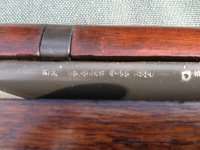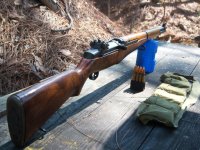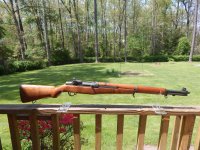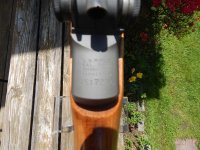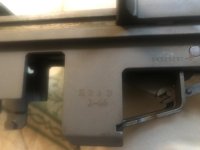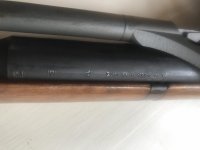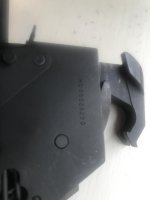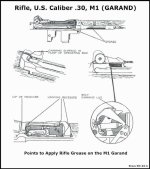get some books, join GCA, post pics, enjoy that masterpiece!
Congratulations on your find. Estate sales have got me some of my best specimens. Like already posted grab some books, download a bunch of articles off the Internet (like how to lubricate the M1..a grease and oil guide), etc.
Joining the GCA (Garand Collectors Association) is like this Forum, very helpful and knowledgeable folks always willing to help and just reviewing old posts and sticky's will tell you more than you ever wanted to know.
As far as what to look for when you get that beauty in your hands you may already know the rifle quickly breaks down into three groups, barreled action, trigger group, and stock. The stock..IF wartime or original issue will have cartouche(s) in some spots, maybe a proof mark under the hand grip. The trigger group will have a rebuild stamp, or electro pencil marks denoting the rebuild arsenal and date, OR if you are extremely lucky it may be original. Check the sights both rear and front, maybe yours are National Match (NM marked). The barrel will be stamped with manufacturer, month and year.
There are simply numerous other items to be checked, photo'd,
and recorded to complete your research, as example style and type of hammer, trigger guard, gas plug, etc. et. al. This why the books are your best friend
My Garand is a IHC (International Harvester Company) manufactured in 1953 for the Korean War. The stock has a "Box P" proof, the sights are NM, and the trigger group is original IHC. The barrel is Springfield Armory, dated August 1965. The rifle was arsenal overhauled by Red River Army Arsenal in January 1966 as one of the last M1's to be overhauled as the US Army stopped the M1 overhaul program in early 1967 to concentrate on M14 overhauls. Like also already posted I shoot ammo specifically labeled "for M1 Garand". Best availability for this ammo is CMP lately.
I really support the statement above about showing up at the range with an M-1..Literally ALL of the tacticool black plastic guys just stop firing to come over and watch you and that old warhorse perform. Especially neat (for me...as I can't assume the prone anymore) is to shoot a clip standing, sometimes with bayonet fixed... the classic wartime GI stanch.

